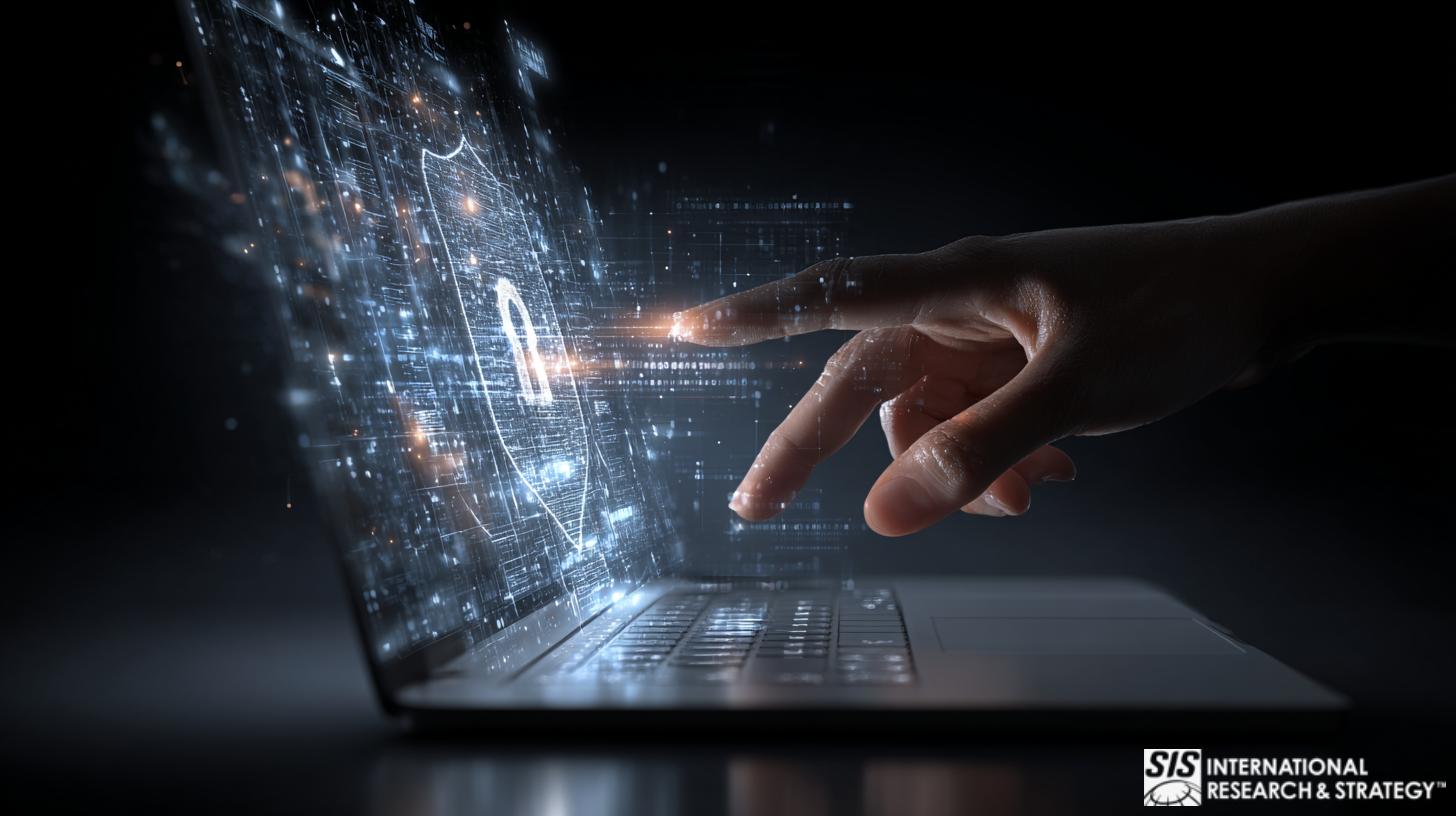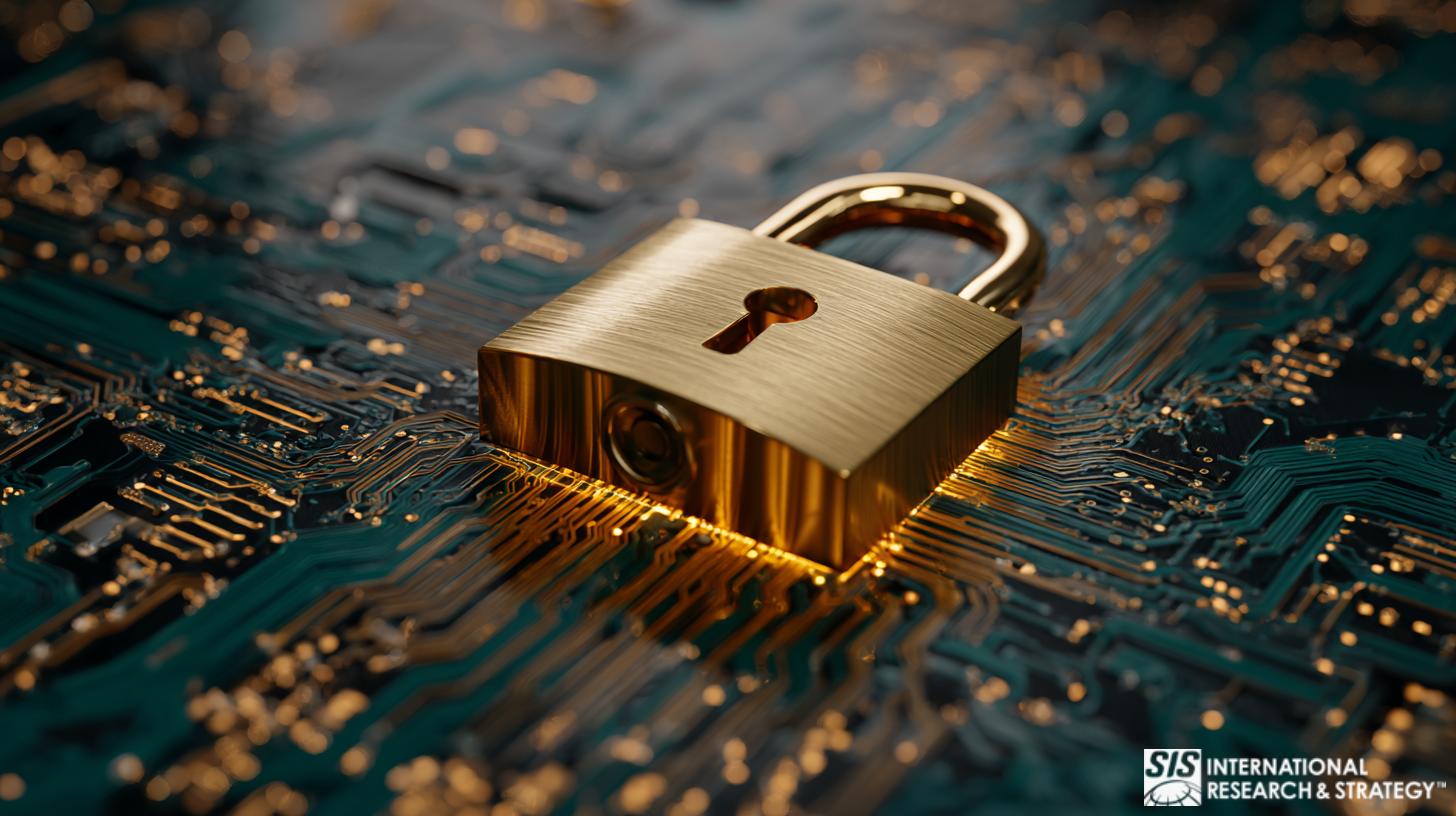
Um vírus totalmente diferente
Uma breve visão geral da batalha em curso para conter a onda de incursões cibernéticas no setor da saúde.
In addition to subversive hacking in the business world, where private information can be compromised and sensitive company data absconded with, cybersecurity measures are now employed to negate the effects of hacking by foreign entities, used a political weapon. It is an increasingly serious global problem, and one that has necessitated the implementation of advanced cybersecurity methodologies to counteract the increasingly sophisticated capabilities of hackers to subvert these very systems.
“In recent years, cybersecurity has been a growing concern in healthcare, with high-profile cyber-attacks and vulnerabilities causing disruptions for insurers, hospitals, and medical device makers. The stakes for patients are high too as patient data could be lost or tampered with, hospital services interrupted, or patients harmed through attacks targeting specific devices … “ 1
Intervenção governamental para combater o crime cibernético
The rapid digitization of the healthcare industry makes this sector particularly vulnerable to cyber attack, and this fact has not been lost on the US Congress. The House Energy and Commerce Committee recently convened to address cybersecurity in the health sector. Information Sharing and Analysis Centers (ISACS) may be key in providing enhanced security for healthcare providers and in thwarting efforts of would-be cyber attackers.
Through the interactive efforts of the 24 organizations that comprise the National Council of ISACs (NCI), great efforts are being made to “maximize information flow across the private sector critical infrastructures and with government. Critical infrastructure sectors and subsectors that do not have ISACs are invited to contact the NCI to learn how they can participate in NCI activities.”2
It is, of course, a Herculean undertaking to strengthen the partnership between public and private entities in healthcare with regard to cybersecurity, considering the myriad industries and agencies of government that are responsible for regulating and delivering said healthcare. Congress has been encouraged to provide tax breaks and other incentives to prompt companies to get involved with the ongoing effort of ISACs.
A fraca participação impede a implementação da segurança cibernética
Unfortunately, poor participation rates among healthcare facilities have been a persistent problem in the ongoing efforts to implement effective cybersecurity measures across the sector. According to Terry Rice, vice president of IT risk management and chief information security officer at Merck, “companies may be hesitant to share information within an ISAC if they fear the information will not remain confidential to its members.”3
“I think the most shocking statistic was really the fact that 40% of the individuals at the top of an organization–executives like CEOs and CIOs, and even board members–didn’t feel personally responsible for cybersecurity or protecting the customer data.” Dave Damato, Chief Security Officer at Tanium, on CNBC’s Squawk Box, falando sobre segurança cibernética no setor de saúde 13
O alto custo do crime cibernético na saúde

Aside from the obvious threat of compromised patient information and other incidents of data theft, failures of cybersecurity are incredibly expensive, to the tune of $6.2 billion annually, according to a 2016 research project conducted by the Poneman Institute. Insights revealed in their studies revealed that “nearly 90 percent of the healthcare organizations … had endured a data breach during the previous two years. Forty-five percent had more than five data breaches in that period, with the average cost of a cyber attack totaling $2.2 million. The data contained in electronic health records (EHRs) is often cited as the reason healthcare is such an attractive target in the eyes of a hacker.”4
As secure as people like to believe their health information is in the possession of their doctor’s office or hospital, it is often not the case. The ongoing digitization of health records has been an expensive proposition for the healthcare industry. Securing all that information is another monumental expense, and sometimes this part of the cybersecurity equation has been neglected in the interest of cost-savings, or just by the large-scale nature of the overall endeavor.
A natureza lucrativa do roubo cibernético na área da saúde
Of course, health records are a hot commodity on the black market, and they can fetch top dollar from parties seeking to obtain personal information, billing addresses, and credit card numbers. Hacking can be a very lucrative enterprise, indeed. Consider this example. “Hackers made off with more than 2.2 million patient records from Fort Myers, Florida-based 21st Century Oncology in March of 2016. A month later, someone stole a laptop with 205,748 unsecured patient records on it from Premier Healthcare, LLC.” 5
O Advento do Ransomware
Ransomware é um termo novo para a maioria das pessoas, familiarizando-se com os recentes ataques WannaCry desencadeados globalmente, paralisando sistemas de infra-estruturas críticas e provocando resgates financeiros significativos daqueles que foram vítimas da ansiedade e da potencial perda de dados características de tais ataques. O setor de saúde, em particular, é vulnerável a incursões de ransomware.
“Os hospitais são o alvo perfeito para esse tipo de extorsão porque prestam cuidados intensivos e contam com informações atualizadas dos prontuários dos pacientes. Sem acesso rápido a históricos de medicamentos, diretrizes cirúrgicas e outras informações, o atendimento ao paciente pode ser atrasado ou interrompido, o que torna os hospitais mais propensos a pagar um resgate em vez de correr o risco de atrasos que poderiam resultar em morte e ações judiciais.” 6
Ransomware malware, in effect, locks up a computer and makes data inaccessible unless a ransom is paid to the perpetrator. Usually, this payment is made in the form of Bitcoin. In most instances, a time limit is established for the ransom to be paid, otherwise the computers data will be destroyed. Though most stricken parties don’t pay the ransom, enough do to make it a particularly lucrative criminal enterprise.
The healthcare industry has been vulnerable to ransomware attacks because, surprisingly, many hospitals have taken inadequate steps to prevent cybersecurity breeches. Instead, most hospitals have focused their primary concern on meeting HIPAA compliance and meeting federal guidelines to ensure the security of patient information. Ultimately, most employees in healthcare are simply not trained well enough to recognize and thwart cyber attacks before they occur. Even when adequate training and cybersecurity measures are in place, it is a continuous challenge to outwit perpetrators who constantly remain one step ahead of the game.
Dispositivos IoT também estão em risco
To add a layer of seriousness to the present situation, cyber attacks can affect not only computers, but devices that are connected to them, as well. Medical tools, heart and glucose monitors are but a few examples of devices vulnerable to cyber attack. Vice-President Dick Cheney famously demanded that his pacemaker be made safe from cyber attack, lest those with ill-intent not manipulate the function of his device remotely. Quite frankly, interference with such devices can be deadly for the patients who depend on them to live.
Como exemplo de hacking médico: “Em uma exploração usada atualmente, conhecida como MedJack, os invasores injetam malware em dispositivos médicos para depois se espalharem pela rede. Os dados médicos descobertos nestes tipos de ataques podem ser usados para fraude fiscal ou roubo de identidade, e podem até ser usados para rastrear prescrições de medicamentos ativas, permitindo que hackers encomendem medicamentos online para depois venderem na dark web.” 7
“No patients have, as far as I know, been killed due to a hacked pacemaker, but patients have been killed due to malfunction[s] of their medical devices, configuration errors, and software bugs. This means that security research in the form of pre-emptive hacking, followed by coordinated vulnerability disclosure and vendor fixes, can help save human lives.”Marie Moe, pesquisadora de segurança da SINTEF, em“Vá em frente, hackers. Quebre meu coração”(Com fio)13
A FCC sugeriu agora que os fornecedores de IoT de dispositivos médicos incorporem medidas de segurança nos produtos que fabricam; a palavra-chave que está sendo sugerida. Na verdade, instigar práticas e requisitos de segurança obrigatórios para esses fabricantes é um esforço demorado. Além disso, as redes designadas para retransmitir dados entre dispositivos e bases de dados também têm uma necessidade crítica de implementação e monitorização da segurança cibernética.
Um novo presidente, uma nova ordem
There was much speculation as to how the Trump administration would address issues of cybersecurity. On May 11, 2017, the president signed an executive order that mandated a review of the nation’s overall abilities to combat criminal cyber-activity. The order places the brunt of responsibility concerning cybersecurity on federal agencies which were to do risk assessments and turn in their respective reports within 90 days. Additional reports examining critical infrastructure risks were due six months after the president’s order was issued.
“A ordem exige uma revisão da ameaça representada pelas botnets, que têm como alvo sites com tráfego de spam gerado automaticamente. O Rede de bots Mirai foi responsável por interrupções significativas na Internet no ano passado. Mas a Access Now diz que a ordem também deve abordar o processo do governo para divulgação de vulnerabilidades e sua resposta a violações de dados.”
There is no overall preventative measure or measure that can eliminate the risk of cyber attacks. Rather, hospitals, clinics, and private practices can only hope to work together and manage the continuous risks in the interest of protecting the private information and the general safety of their patients. Concurrently, continuous technological advancements will hopefully address the vulnerability of medical devices and computer networks.
Este esforço para conter os efeitos potencialmente desastrosos do cibercrime no sector da saúde e não só vai muito além dos Estados Unidos. Está actualmente em curso um esforço global para conter a onda de ataques cibernéticos em todo o mundo, ou pelo menos para minimizar o impacto do que parece ser um esforço interminável em nome dos cibercriminosos para se infiltrarem nos sistemas de saúde e causarem estragos e extorquirem sempre que possível , para quaisquer fins nefastos.
Motivações políticas para ataques cibernéticos

With the hostile political climate that exists between North Korea and virtually every other country in the civilized world, it is not surprising that the rogue nation has been cited as a probably offender in the recent WannaCry ransomware attacks, and other ill-willed endeavors undertaken for political reasons and for the purposes of financial extortion.
“Pesquisadores de segurança cibernética encontraram pistas técnicas que, segundo eles, poderiam ligar a Coreia do Norte ao ataque cibernético global de “ransomware” WannaCry que… infectou mais de 300.000 máquinas em 150 países. Symantec and Kaspersky Lab said … some code in an earlier version of o software WannaCry também apareceu em programas usados pelo Grupo Lazarus, que pesquisadores de muitas empresas identificaram como uma operação de hackers dirigida pela Coreia do Norte.” 10
Nem todos os especialistas acreditam que o ataque do ransomware WannaCry foi motivado por razões financeiras. Alguns, como Matthew Hickey, dos consultores cibernéticos britânicos Hacker House, acreditam que os perpetradores esperavam simplesmente “causar o máximo de danos possível”. Este foi certamente o caso nos países mais afectados pelo ataque, incluindo Índia, Taiwan, Ucrânia e Rússia.
Alguns, como o líder russo, Vladimir Putin, culparam a NSA pelo que ele alegou ser o seu papel nos ataques de ransomware WannaCry. Acredita-se que a tecnologia WannaCry seja “baseada em uma ferramenta vazada que aproveita uma falha de segurança no Windows que parece ter origem na NSA. “Estamos plenamente conscientes de que os génios, em particular os criados pelos serviços secretos, podem prejudicar os seus próprios autores e criadores, caso sejam libertados da garrafa”, disse Putin em Pequim. de acordo com o serviço de notícias estatal russo, Tass.” 11
“This next president is going to inherit the most sophisticated and persistent cyber espionage cultures the world has ever seen, He needs to surround himself with experts that can expedite the allocation of potent layers of next-generation defenses around our targeted critical infrastructure silos.” James Scott, Senior Fellow, Institute for Critical Infrastructure Technology 14
Tendências no Combate à Ciberincursão no Setor da Saúde
Obviously, the threat of cybersecurity breaches across all sectors of business and industry will not abate. In healthcare, there will be an ongoing and incessant need to improve technology and overall vigilance to avoid disastrous incidents in the future. Certain protective trends are emerging that might be seen as the future of cybercrime deterrence in healthcare.
At the top of the list is an increasing migration to cloud-based information security tools. This move “will allow the tools to be updated more dynamically to address zero-day type malware. This move to the cloud should ultimately make it more economical to make these tools available to all healthcare providers – large and small.” 12
In addition, the healthcare industry will be forced to encourage increased information sharing and collaboration across health networks and between facilities. This mutual cybersecurity effort will be difficult to instigate as health institutions are often quite insular by nature. It is predicted that this sharing of information will reach beyond healthcare to include many sectors of business and institutional endeavors to minimize risks for all involved.
Ultimately, the effort to negate the dangers of cybersecurity breaches, ransomware, and new and emerging threats in this arena will come down to education and awareness on all employee levels in healthcare and beyond. When everyone is well-educated and made to see warning signs of cyber-risks and what they can do to be part of an overarching effort to stem the tide of cyber-incursion, the healthcare industry and all protectors of civilized information sharing around the globe will continue to make meaningful strides towards limiting the damaging effects of cybercrime in all sectors.
AI-Driven Website Security: WP Safe Zone for Healthcare
In the healthcare sector, where sensitive patient data is a prime target for cyberattacks, robust website security is critical. The rise of AI in cybersecurity is providing powerful solutions to combat these threats. One standout example is the WP Safe Zone plugin, tailored for WordPress websites.
WP Safe Zone utilizes artificial intelligence to protect websites from malware, brute force attacks, and unauthorized access. Its AI algorithms constantly monitor and adapt to emerging threats, ensuring real-time protection for healthcare organizations’ online platforms.
As cyber risks in healthcare continue to grow, tools like WP Safe Zone demonstrate how AI can safeguard critical systems, ensuring both data security and compliance with strict regulations.
Podemos ajudar em seu esforço de segurança cibernética
A SIS International Research passou décadas interagindo com o setor de saúde em vários níveis, desde práticas familiares independentes até redes de saúde monolíticas e de vários níveis. A nossa compreensão singular dos desafios enfrentados pelas empresas e instituições no setor da saúde é incomparável. Fornecemos pesquisa e inteligência sobre as partes interessadas[/fusion_text][fusion_text]
Nossas soluções incluem:
Hoje, com a complexidade adicional da ameaça imposta pelo aumento da cibercriminalidade dirigida às nossas mais respeitadas instituições de saúde e aos pacientes que elas atendem, consideramos o nosso papel com o mais alto grau de seriedade. Como uma empresa que se orgulha de compreender a importância e a natureza multifacetada do setor de saúde, continuaremos a atender práticas, instalações e organizações relacionadas à saúde com as mesmas capacidades de pesquisa abrangentes e de alta qualidade que nossos clientes adquiriram. esperar e exigir. Desta forma, esperamos fazer a nossa parte para ajudar a comunidade médica a compreender e combater a ameaça muito real e grave dos ataques cibernéticos no sector da saúde.
Os seguintes recursos foram utilizados na compilação desta pesquisa:
http://www.raps.org/Regulatory-Focus/News/2017/04/04/27267/Cybersecurity-House-Committee-Looks-to-Build-on-Public-Private-Partnerships/#sthash.x4Xvdf6q.dpuf
https://www.nationalisacs.org/
http://www.raps.org/Regulatory-Focus/News/2017/04/04/27267/Cybersecurity-House-Committee-Looks-to-Build-on-Public-Private-Partnerships/#sthash.x4Xvdf6q.dpuf
https://learningnetwork.cisco.com/blogs/talking-tech-with-cisco/2017/03/21/cybersecurity-and-healthcare-a-forecast-for-2017
https://learningnetwork.cisco.com/blogs/talking-tech-with-cisco/2017/03/21/cybersecurity-and-healthcare-a-forecast-for-2017
https://www.wired.com/2016/03/ransomware-why-hospitals-are-the-perfect-targets/
https://www.wired.com/2017/03/medical-devices-next-security-nightmare/
https://techcrunch.com/2017/05/11/trump-signs-long-delayed-executive-order-on-cybersecurity/
http://www.healthcareitnews.com/news/top-10-cybersecurity-must-haves-2017
http://www.dingit.tv/highlight/1441974?utm_source=Embedded&utm_medium=Embedded&utm_campaign=Embedded
www.healthcareitnews.com/blog/3-trends-shaping-future-cybersecurity
https://www.forbes.com/sites/danmunro/2016/12/18/top-ten-healthcare-quotes-for-2016/#5f47fb6b127f
http://www.goodreads.com/quotes/tag/cyber-security



